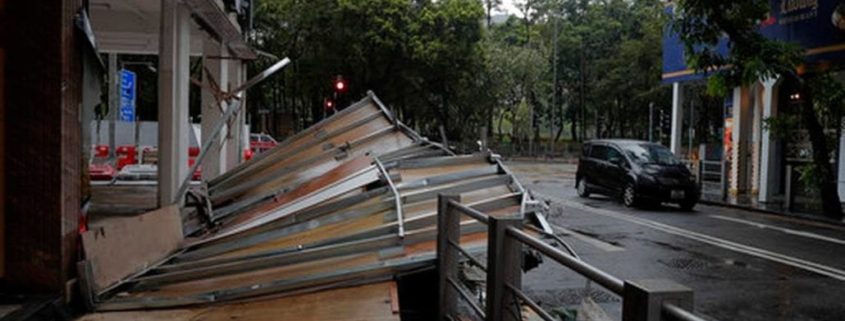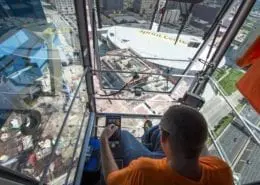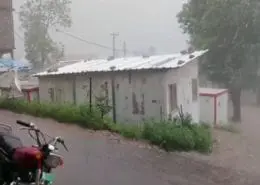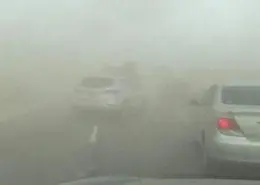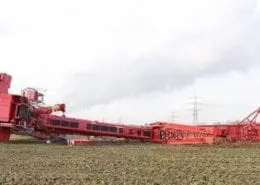Perched high above a Children’s Mercy Hospital construction site, Carl Potter gently moves his left wrist and the 100-plus-foot tower crane rumbles to the right.
A push of his wrist sends the crane’s hook to the ground, where dozens of construction workers wait to attach a cement bucket to the crane’s rigging. They look like toy soldiers from this vantage point.
One of the four walkie-talkies used to communicate with the workers goes off, and he’s on to the next pick. Sometimes he eyes the drop and sometimes can’t see his work at all — relying on radio signals to navigate.
“It’s constant. There’s a tentative schedule, but I don’t eat lunch, I don’t have time,” says Potter, a tower crane operator for about 17 years.
As one of about 4,500 heavy machine operators in the Operating Engineers Local 101 union, Potter has been busy handling downtown Kansas City’s construction boom.
From his operator’s chair, Potter has a breathtaking view of downtown — a skyline crane operators have forged in the last decade — the Sprint Center, Kauffman Center for the Performing Arts and the current construction of the city’s Two Light luxury apartments.
“Downtown’s growth has been the single most important thing that has happened to the construction industry,” said Jeff Holt, director of operations for Wilkerson Crane rentals, which owns cranes and provides operators. “Ten years ago you didn’t go downtown for nothing, and as an operator, the pride of driving downtown and seeing the things you’ve built, being a part of that change, it’s incredible.”
Potter, 41, of Lee’s Summit, has been up since 3:30 a.m. and has been overlooking the parking garage construction site inside the closet-sized cockpit since 4:30 a.m..
There’s a honey bun, oatmeal cream pie and a few empty energy drink cans in a neat row near his left arm rest. Underneath, a small cabinet door conceals a few water bottles filled with urine — it would be a waste of time to make the 10-minute climb down to use the restroom.
There’s an AM/FM radio built into the crane’s dashboard, but Potter doesn’t use it, opting for complete concentration during his typical 11-hour shifts. Potter tries to minimize distractions in a construction industry that accounts for more than 4,500 deaths annually, according to the Occupational Safety and Health Administration. He combines this discipline with more than 4,000 hours of required training by the union’s certification program.
Learning how
About 30 miles north in Weston, Stoney Cox stands on top of a 100-foot tower crane.
Cox, administrator of the union’s apprenticeship program, surveys the 220-acre training facility and casually leans over the railing. The facility is one of the largest in the country with a diverse landscape of hills and trees.
The Operating Engineers represent workers who use heavy machines, which include large dirt excavators, rollers, bulldozers and various cranes. The facility has more than 50 machines on the property to practice on. The international union often hosts conferences and training sessions on the property.
“Apprentices will take these cranes entirely apart almost a dozen times and learn every part of the machine before they even sit in an operator’s chair,” Cox says.
The three-year program requires 4,000 hours of training, including time in the facility’s classrooms and in the field working as an oiler. An oiler acts as an assistant to the large machine operators, maintaining the equipment, and in turn, the operator trains the apprentice on the job.
Nationally, middle-skill jobs, which require education beyond high school but not a four-year degree, make up the largest part of the labor market in the United States. In both Missouri and Kansas, there aren’t enough skilled laborers to fill the jobs, according to the National Skills Coalition.
Local 101 president Michael Charlton says the union has had a steady flow of apprentices the last few years to meet the area’s growing demand. They’ve struggled to recruit in the past, but Charlton says a more aggressive online advertising campaign and career fairs have boosted numbers.
“There’s zero cost to be an apprentice,” Cox said. “We use that a lot when we go to career fairs. Then parents come in and are asking, ‘You telling me little Johnny doesn’t have to pay for this?’ He pays nothing.”
At the same time, college is getting more expensive. The average four-year college student graduates with more than $30,000 in debt, according to the Institute of College Access and Success. As an apprentice, workers can earn close to $40,000 a year and can make $70,000 to $100,000 by the time they are journeymen.
Holt says high- school students aren’t exposed to certificate programs and trade schools. Often, he says, construction work is looked down upon.
“There’s a definite push that you need a college education to do anything,” Holt said. “This is a great living; I have done this since I was 18. I didn’t go to college — college wasn’t for me — and there are a lot of kids like that out there.”
“I know I can do my job”
Monica Confer always felt restless in a classroom. She stopped going to high school when she was 14 and opted for a GED certificate instead.
She held a bunch of jobs as a teenager and in her early 20s, running forklifts for warehouses and spending time in an auction yard. Confer had her son at 19, and the jobs weren’t cutting it.
“I needed better benefits for my son,” said Confer, 38, of Kansas City. “I could not afford insurance making less than $10 an hour.”
College wasn’t an option. She grew up in a union family, and her father’s friend recommended she apply to the Operating Engineers. She started as an apprentice in 2002.
Sometimes when she arrives at a new job site, she said, guys ask if she is the oiler; they’re surprised to see a woman in the operator’s chair.
“I’ve never had any big problems,” Confer said. “I think it used to bother me but I don’t even care anymore. Whatever, I know I can do my job.”
Charlton remembers a time when there were no women in Local 101 but says women now make up of about 20 percent of the workforce.
In 2014, the Bureau of Labor Statistics reported 9.8 million people working in the construction industry. Of those, 872,000 of them, or 8.9 percent, were women.
Confer admits a level of paranoia about safety on the job. She typically wakes up by 4 a.m. to get to a job site about an hour early, especially at a new site. She goes through 20 minutes of safety inspections and gets to know every inch of the machine.
She has gotten home, sat on her couch and panicked about whether she had set the crane’s brake. She’ll climb back into her SUV and drive back to the construction site to double check.
“Everybody sees the crane collapses on the news. I have never been on a job when there’s been a crane accident,” Confer said. “If something were to happen and you hadn’t done your safety checks, that’s your conscience, legalities aside.”
Unstable ground conditions, high gusts of wind and operator error are the leading causes of crane accidents, Charlton said. And with more cranes among denser populations downtown there’s less room for error.
Boom town
Tommy Wilson, an urban planner for the Downtown Council of Kansas City, marks the beginning of the city’s revitalization around 2003 with the approval and planning of the Power & Light District. The boom includes construction of the the Sprint Center, H&R Block’s headquarters and new residential spaces. In 10 years, close to $6.5 billion dollars has been invested into downtown.
Wilson says the streetcar’s construction sparked a second wave of development in 2013, with an additional $1 billion invested along the Main Street route. “Our next step and goal is to make the redevelopment sustainable. Sustainability is having a good residential population that calls this place home,” Wilson says.
He says around 24,500 people live downtown, and that number will grow to nearly 30,000 by 2020.
As more people move downtown, more retail and additional office spaces follow, attracting additional residents — it’s a cycle of growth that Wilson projects will continue.
“This downtown revitalization isn’t just a fun phase we are going through” Wilson says. “We want this growth to continue for decades to come.”

